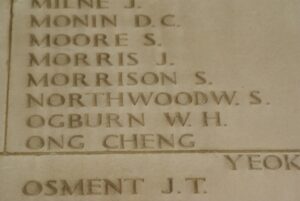Llangathen is a Parish near Llandilo Fawr, incorporating the historic Aberglasney Gardens, and is set in a picturesque agricultural area in the Towy Valley, east of Carmarthen. The Parish is served by the Church of St. Cathen. Within the Churchyard is a granite Celtic Cross, which commemorates the fallen of both World Wars. There is reportedly also a plaque inside St. Mary’s Church at Cwrt Henri, in the same Parish, which duplicates most of these names.
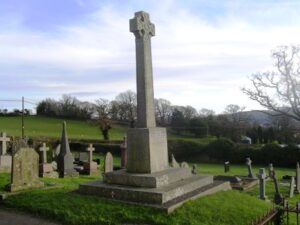
The Great War, 1914-1918
Arthur Henry Birch, Private, 14480, Kings Shropshire Light Infantry. Arthur was born at Stourport. He was working as a farm hand at Abergwili prior to 1911, and by the outbreak of war lived at Abersannan, Golden Grove. Arthur enlisted at Carmarthen into the army. Arthur was posted to the 7th Battalion, King’s Shropshire Light Infantry, which was attached to 8 Brigade, 3rd Division. He landed in France with the battalion on 28 September 1915, and moved to join the 3rd Division at Ypres. Arthur was killed in action during the Actions of St. Eloi Craters on 21 May 1916, aged 18. He is buried at La Clytte Military Cemetery, Belgium.
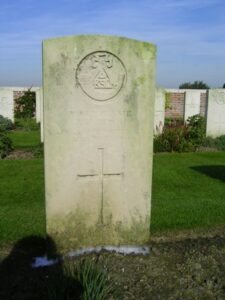
Ernest Davies, Private, 53674, Welsh Regiment. Ernest was the son of William and Anne Davies, of Broadoak, Llangathen. He originally enlisted at Carmarthen into the Pembroke Yeomanry, and sometime during the winter of 1916/1917 was posted to France to join the 2nd Battalion, Welsh Regiment, which was attached to 3 Brigade, 1st Division. Ernest probably joined the battalion on the Somme and was reportedly wounded there, also suffering frost bite. He returned home for treatment before returning to France, and would have fought through the Battle of Passchendaele with the Division. He was caught up in the terrible fighting on the Lys during the German advance in April 1918. Ernest was wounded when a German mine exploded near his dug-out during the Division’s advance on the Hindenburg Line in September 1918, and he died of his wounds on 16 September 1918, aged 21. He is buried at Heath Cemetery, Harbonnieres, France.
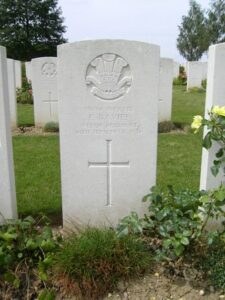
Isaac Davies, Driver, 135383, Army Service Corps. Isaac was born in 1882, the son of David and Rachel Davies, of Cilsane Mill, Llangathen. He had worked as a draper for Morgan and Hayes Company at Cardiff for several years prior to the war. Isaac was initially rejected as unfit after trying to enlist into the army in August 1914, but on 29 October 1915 tried again, and was accepted to join the Army Service Corps. He trained as a driver, before embarking for France on 13 March 1916, where he was posted to a Motor Machine Gun Section as a driver. Isaac was reportedly gassed during the opening day of the Battle of the Somme, on 1 July 1916, and the roof of his dugout was later blown in by a German shell. As a result he suffered shell-shock, and was invalided home on 17 October 1916. After a short spell in hospital in Southampton, Isaac returned home to Cilsane Mill to recuperate, but died on 17 December 1916, aged 34. He was buried at St. Cathen Churchyard. Isaac is not presently commemorated by the CWGC, as they do not deem his death to have been caused by his military service, despite my best efforts to prove otherwise.
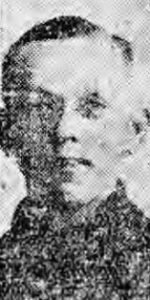
John Gabriel Davies, Private, 45492, Welsh Regiment. John was the son of Ann Davies, of Dryslwyn Castle Inn. He enlisted at Llandeilo into the Welsh Regiment, and was posted to France, probably early in 1916, joining the 2nd Battalion, Welsh Regiment, which was attached to 3 Brigade, 1st Division. In June 1916 the Division were on the Somme, and fought through the offensive, at the Battles of Albert, Bazentin and Pozieres, where John was wounded in Action. He was evacuated to the Casualty Clearing Station at Puchevillers, where he sadly Died of Wounds on 27 August 1916, aged 41. John is buried there, at Puchevillers British Cemetery, France.
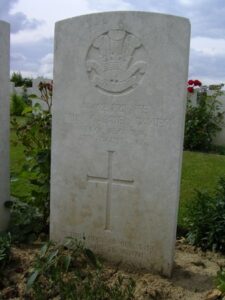
Tom Davies, Private, 29077, South Wales Borderers. Tom was born at Dryslwyn and lived at Ffosybroca, Llangathen. He enlisted at Tonypandy into the army and was posted to France during 1916, joining the 1st Battalion, South Wales Borderers, which was attached to 3 Brigade, 1st Division. The division saw heavy fighting on the Somme during the summer of 1916. It followed the German retreat to the Hindenburg Line in early 1917, and moved to the Flanders Coast during the summer of 1917. While training on the coast, the Allied offensive at Ypres had stalled in the mire, and the Division was transferred there, taking part in the Second Battle of Passchendaele. After spending another Winter in Flanders, the division was near Estaires when the German Spring Offensive hit the area on 9 April 1918 and was thrown into action. Tom was killed in action during heavy fighting near the La Bassée Canal on 11 April 1918. He has no known grave and is commemorated on the Loos Memorial, France.
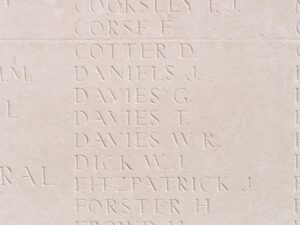
William John Davies, Corporal, 40012, South Wales Borderers. William was born at Plasnewydd, Llangathen, the son of Thomas and Mary Ann Davies. The family moved to 24, Railway Terrace, Tumble before the war. William enlisted there into the Royal Welsh Fusiliers. He was later posted to the 2nd Battalion, South Wales Borderers, which had recently arrived back in England from duty at Gallipoli, as part of 87 Brigade, 29th Division. The Division took part in its first major action in France during the 1916 Somme Offensive, and fought at the Battles of Albert and Le Transloy, suffering heavy casualties. They remained on the Somme over the winter, and it was here that William was killed on 26 February 1917, aged 19. He has no known grave, and is commemorated on Pier and Face 4A of the Thiepval Memorial, France.
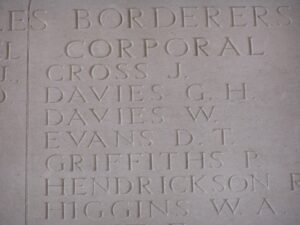
Benjamin Griffiths, Private, 42353, South Wales Borderers. Benjamin was the son of Sarah Griffiths, of Aberglasny Lodge, Llangathen. He originally enlisted at Ammanford into the Welsh Regiment, before being posted to the 5th Battalion, South Wales Borderers, which were attached to 58 Brigade, 19th (Western) Division. The Division crossed to France in 21 July 1915, and moved to positions near Loos, where it took part in the opening attack of the Battle of Loos on 25 September 1915. The following year the Division moved to the Somme, where it took part in the second wave of the attack on Ovillers-La Boiselle on 1 July, capturing the village at heavy cost. It then fought through the Somme Battles of Pozieres and the Ancre in 1916. Benjamin was killed in action on the Ancre on 18 February 1917. He was 22 years old, and is commemorated on the Thiepval Memorial, France.
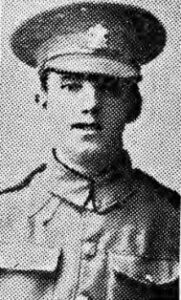
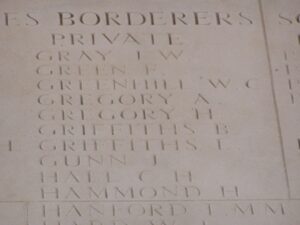
Walter Hailes, Private, 200295, Welsh Regiment. Walter was born at Kidderminster in 1893. He worked as a groom at Wernfawr, Llangathen prior to 1911, and enlisted at Llandeilo into the 1/4th Battalion, Welsh Regiment. The battalion sailed for Gallipoli in July 1915 as part of 159 Brigade, 53rd (Welsh), and saw fierce fighting at Gallipoli before being evacuated to Egypt in December 1915. In March 1917 the Division was part of the force which invaded Palestine, and it was here, during the First Battle of Gaza, that Walter was killed on 26 March 1917. He was 23 years old, and is commemorated on the Jerusalem Memorial, Israel.
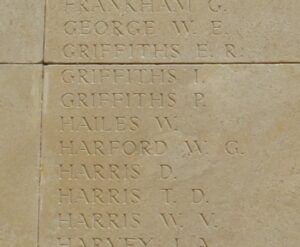
Edward Jones, Sergeant, 200808, Welsh Regiment. Edward was born at Dryslwyn Station, Llangathen, the son of David and Margaret Jones. He was a student at Carmarthen Training College when he enlisted on 15 October 1912 into the 4th Battalion, Welsh Regiment, which was the local Territorial unit. He didn’t serve overseas, as he was deemed to be unfit, and was discharged on 23 October 1917 as being no longer physically fit for war service. Edward died of Tuberculosis at Station House, Dryslwyn on 14 January 1918, aged 28. He was accepted for commemoration by the CWGC on Saturday 14 January 2012, following my research and was to be commemorated on the Brookwood (United Kingdom 1914-1918) Memorial. After a lot of work, I finally managed to find that Edward was buried in Llanarthney Churchyard, and the details were forwarded to the CWGC who have recently installed this headstone to commemorate him.
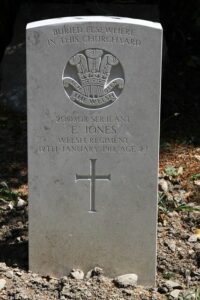
John Lewis, Private, 53644, Welsh Regiment. John was the son of William and Mary Lewis, of Glandulais Lodge, Dryslwyn, and enlisted at Ammanford into the 2nd Battalion, Welsh Regiment. The battalion had been in France since the outbreak of war, attached to 3 Brigade, 1st Division, and saw considerable fighting during the first years of the war. John probably joined the battalion after the Somme battles in 1916. They followed the German retreat to the Hindenburg Line in early 1917, and were then briefed for an operation on the Flanders Coast, and moved there during the summer of 1917. While training on the coast, the Battle of Third Ypres had stalled in the mire, and the Division were recalled to Ypres, where they fought at the Second Battle of Passchendaele. After spending another Winter in Flanders, they were near Estaires when the German Spring Offensive caught them, fighting through the Battles of Estaires, Hazebrouck, and Bethune before being moved South again to Arras, fighting at the Battle of Drocourt-Queant, and at the Battle of Epehy, after the tide had been turned in the favour of the Allies. The Division pushed on towards the St. Quentin Canal, and moved toward the Hindenburg Line. John was wounded here whilst acting as Regimental Stretcher Bearer, and was evacuated to the Base Hospital at Rouen for treatment, but sadly died there of his wounds on 3 October 1918. He was 28 years old, and is buried at St. Sever Cemetery Extension, Rouen, France.
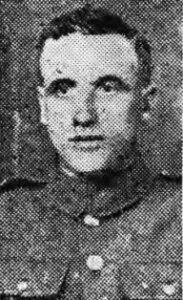
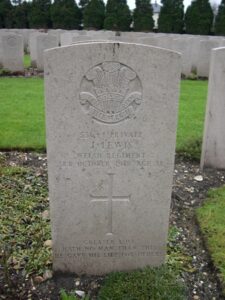
Albert Pritchard, Private, 13057, Welsh Regiment. Albert was originally from Hereford, but resided at Brynhafod, Llangathen prior to the war, working as a waggoner. He enlisted at Carmarthen into the 2nd Battalion, Welsh Regiment, which moved to France in August 1914 attached to 3 Brigade, 1st Division. The Division fought at the Battle of Mons, and taking part in the retreat to the Marne, where the Germans were stopped. They then fought at the Aisne, and at Chivy, before being moved north to Ypres. Here they fought at the First Battle of Ypres, where they again stopped the German Offensive, before wintering in Flanders, posted to the Dranoutre Sector. Albert was killed here on 2 April 1915, during a relatively quiet spell. He was 23 years old, is buried at Lindenhoek Chalet Military Cemetery, Belgium.
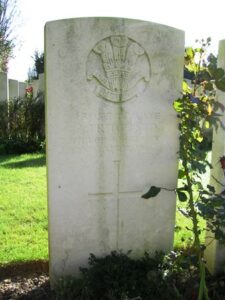
Thomas Rees, Private, 44253, South Wales Borderers. Thomas was born at Golden Grove in 1886, the son of John and Elizabeth Rees. The family later moved to the Three Compasses, Llangathen. Thomas resided at 6, Cromwell Street, Swansea prior to the war, and enlisted at Chatham into the 2nd Battalion, South Wales Borderers. The battalion was in China at the outbreak of war, and took part fighting there against the German Garrison at Tientsin. It was then recalled to Britain, where it joined 87 Brigade, 29th Division, and took part in the Gallipoli Landings, gaining a reputation for its fighting ability. The Division moved to France during May 1915 and took part in its first major action in France during the 1916 Somme Offensive. It then fought at the Battles of Albert and Le Transloy, suffering heavy casualties. In the Spring of 1917 they fought at the Battle of the Scarpe, which was part of the Arras Offensive, and then moved further north to Ypres. Here they fought at the Battle of Langemarck, and this is where Thomas was killed on 16 August 1917, aged 31. He has no known grave, and is commemorated on the Tyne Cot Memorial, Belgium.
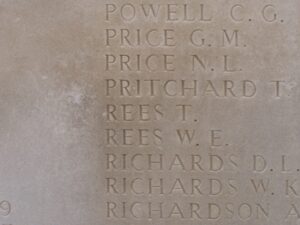
Harry Shooter, Private, G/29227, East Kent Regiment. Harry was the son of William and Mary Shooter, of Birchwood, Derbyshire. He had worked at Dryslwyn Uchaf, Llangathen prior to the war, and had enlisted at Derby into the army. Harry married Florence M Walker, of 14, High Street, Pleasley Hill, Mansfield, Notts in 1916. He was posted to the 7th Battalion, East Kent Regiment, which was in France attached to 55 Brigade, 18th (Eastern) Division. The Division had fought during the Battle of the Somme in 1916, and through the Battles of Arras and Third Ypres the following year. In 1918 it fought at the Battle of St Quentin, suffering terrible casualties, and took part in the Battle of the Avre and the Actions of Villers-Bretonneux. On 8 August 1918 they formed part of the force which attacked the German positions around Villers Brettoneux, south of the Somme Valley, during the Battle of Amiens, and then took part in the Battle of Albert, which began the great push by the Allies which ended the war. Their next action was at the Battle of Bapaume, and then at the Battle of Epehy, which was during the second phase of the Battles of the Hindenburg Line. Harry was killed here on 18 September 1918. He was 24 years old, and is buried at Unicorn Cemetery, Vendhuile, France.
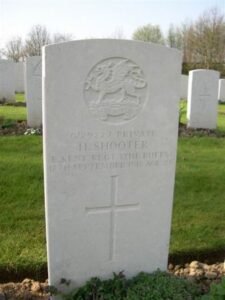
William Thomas, Private, 1298, Welsh Guards. William was the son of John and Margaret Thomas, of Penwaun, Capel Isaac, Llandeilo. He had enlisted at Kingston, Surrey into the 1st Battalion, Welsh Guards, who were raised after the Royal Warrant on 26 February 1915. After being formed, they became part of 3 Guards Brigade, Guards Division, which was formed in France in August 1915. Their first taste of battle was at Loos, and they remained here over their first winter in France, before moving to Ypres, where William was wounded. He Died of Wounds on 3 July 1916, aged 22, and is buried at Brandhoek Military Cemetery, Belgium.
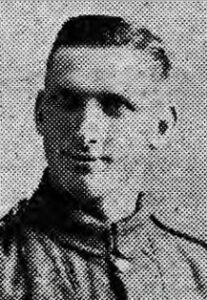
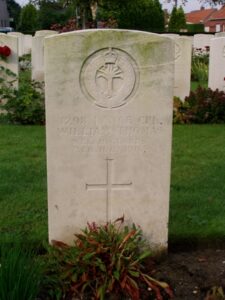
Edgar Frederick Watts, Sergeant, 9412, South Wales Borderers. Edgar was born in Brecon, the son of Edgar Frederick and Mary Anne Watts. At the turn of the century the family had moved to 15, Railway Terrace, Llandeilo, and by 1911 were residing at Broad Oak, Llangathen. Edgar had enlisted into the 1st Battalion, South Wales Borderers prior to 1911. The battalion moved to France at the outbreak of war, as part of 3 Brigade, 1st Division. They had remained on the Western Front throughout the war, and had fought in almost every major Battle that had been fought along the Western Front, and at the end of the war were selected to be part of the Army of Occupation stationed at Bonn. Sadly, Edgar Died of Pneumonia in Germany on 3 March 1919, aged 29. He had survived all of the bloodshed of the conflict, only to fall to illness, and is buried at Cologne Southern Cemetery, Germany. His brother William also fell.
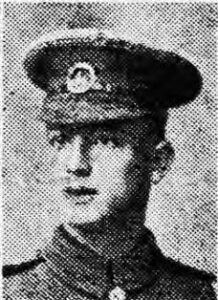
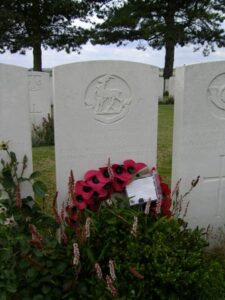
William Arthur Watts, Private, 88941, King’s Liverpool Regiment. William was the son of Edgar Frederick and Mary Anne Watts. At the turn of the century the family had moved to 5, Railway Terrace, Llandeilo, and by 1911 were residing at Broad Oak, Llangathen. He enlisted at Carmarthen into the army. Sometime in 1917 he was posted to the 7th Battalion, King’s Liverpool Regiment, which had been in France since March 1915, attached to 6 Brigade, 2nd Division. William probably saw his first action during Third Ypres, at the Battles of Pilckem and the Menin Road, and moved to Cambrai by November, where they fought during the Battle of Cambrai. They were decimated during the German counter-attacks on Cambrai, and moved to Givenchy and Festubert to recover, but were caught here when the German Offensive was focussed on Flanders, and made a name for themselves at the Battle of Estaires. William was Killed in Action here, on 11 April 1918, aged just 20, and is commemorated on the Loos Memorial, France. His brother Edgar also fell.
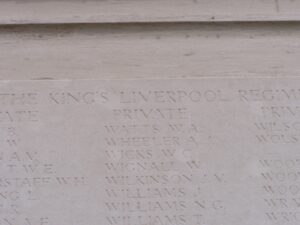
Percival St. George Charles Westby, Lieutenant, Royal Field Artillery. Percival was born at Aberglasney on 20 November 1888, the son of Francis Vandeleur and Louie Westby, of Roebuck Castle, Co. Dublin. He was educated at Harrow School and at Trinity College, Cambridge, and had spent several years in Germany prior to the war, in an attempt to master the language prior to joining the Diplomatic Service. He was commissioned on 10 November 1914 into the Royal Field Artillery, and was posted to France in March 1917 with A Battery, 296th Brigade (North Midland), which was attached to the 59th (2nd North Midland) Division. Percival was mortally wounded by German shellfire at Ypres on 23 September 1917, and died of his wounds that same day, aged 28. He is buried in Brandhoek New Military Cemetery No. 3, Belgium. Percival is not commemorated locally.
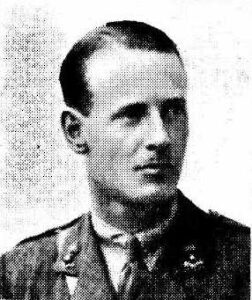
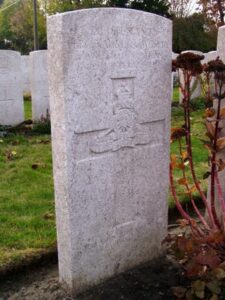
Thomas Windle, Private, 8764, Welsh Regiment. Thomas was born in Liverpool on 26 October 1886, the son of George and Margaret Windle. He was working as a farm servant at Dryslwyn Fawr, Llangathen by 1901. Thomas married Esther Rees, the sister of Reverend Dyfi Rees, of Cwmamman in 1911, and the couple had two daughters, Mary and Netta. Thomas was a regular soldier who had enlisted at Llandeilo into the 2nd Battalion, Welsh Regiment some years prior to the war. At the outbreak of war the 2nd Welsh was part of 3 Brigade, 1st Division, who were rushed to France in August 1914 and moved to positions near Mons. After fighting at the Battle of Mons, they took part in the epic retreat to the Marne, where the BEF stopped the German Attack in its tracks, and forced them to retreat to the Aisne, where they again engaged them in Battle. Thomas was wounded during the Battle of the Aisne, and Died of Wounds on 15 September 1914, aged 27. He is commemorated on the La Ferté-Sous-Jouarre Memorial, France. Thomas is commemorated at Cwmamman.
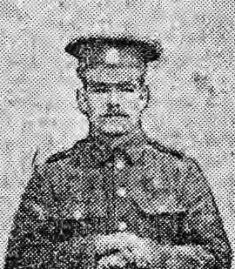
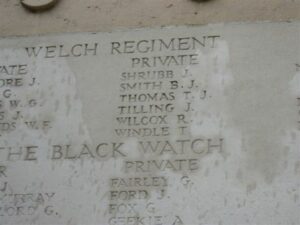
Evan George Wright, Private, 5136, Welsh Regiment. Evan was the son of Alfred John and Emily Jane Wright, of Maesyrhiw, Talley. He worked as a farm servant at Upper Gilsanc, Llangathen prior to the war. Evan enlisted at Carmarthen into the 1/4th Battalion, the Welsh Regiment, with the number 5136. The Battalion formed part of the 159th Brigade, 53rd (Welsh) Division, and fought at Gallipoli. It was at Gallipoli, during the Attack on Scimitar Hill, that Evan was killed in action on 10 August 1915, aged 19. He is remembered on the Helles Memorial, Gallipoli.
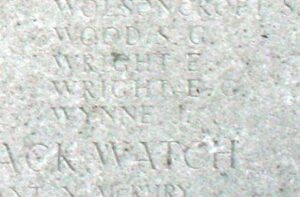
——————————————————————————————————————————————–
World War Two, 1939-1945
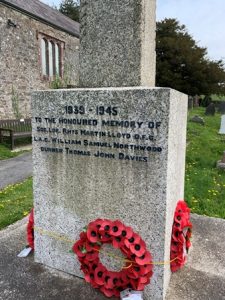
Victor Charles Coombes, Lance Corporal, 4080534, South Wales Borderers. Victor was born at Llandilofawr in 1915, and married Emily M. Johns at Carmarthen in 1939. The couple resided at Redstone Villa, near Llandeilo, and Victor served with the South Wales Borderers during the war. He died at Carmarthen Infirmary on 14 July 1941, aged 26, and is buried at Llangathen (St. Cathen) Churchyard. Victor is not commemorated on the war memorial.
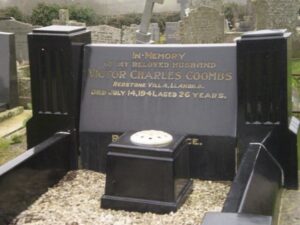
Thomas John Davies, Gunner, 985062, Royal Artillery. Thomas was the son of John and Jenny Davies, of Castle House, Dryslwyn. Very little is known of him but he died at Rookwood Hospital, Llandaff on 7 December 1943, and is commemorated on the Brookwood Memorial, Surrey.
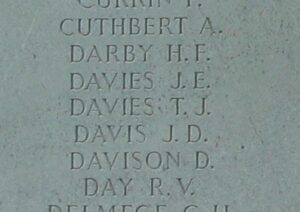
Rhys Martin Lloyd, DFC, Squadron Leader, Royal Air Force. Rhys was the son of Colonel and Mrs A. Lloyd, of Court Henri. He was educated at Cambridge, and was commissioned from the Cambridge University Air Squadron into the Royal Air Force on 2 August 1940, becoming a Pilot with 33 Squadron. The Squadron took part in the defence of Malta, equipped with the Supermarine Spitfire. During the course of the battle, Rhys was awarded the Distinguished Flying Cross, the citation which was published on 28 April 1942 read; ‘This officer is a confident and skilful fighter pilot. He has destroyed 2, probably destroyed 3 and damaged a further 5 hostile aircraft. He invariably presses home his attacks from the closest range’. Rhys was then posted to North Africa, where he flew a Hawker Hurricane. Rhys was lost, presumed killed, when his Hurricane was shot down by fighters west of El Alamein on 27 October 1942. He is commemorated on the Alamein Memorial, Egypt.
William Samuel Northwood, Leading Aircraftman, 948273, Royal Air Force Volunteer Reserve. William was born on 1 July 1912, the son of Walter Northwood and Jane Northwood (nee Davies), of Court Henry Mill, Llangathen. His father died in 1920, so his mother moved with her young family to Llwynarel, Llanegwad. William, who worked as a motor mechanic, married Eileen Nicholas, a nurse at Pantglas Hall, in the autumn of 1940. He enlisted into the Royal Air Force Volunteer Reserve and was posted to 84 Squadron, Royal Air Force. The Squadron left Heliopolis by air and sea parties between January 14th and 18th 1942, bound for the Far East, to help counter the Japanese. The first flight of the Air Party was inspected by Air Marshall Sir Arthur Tedder, ACC in Chief Middle East, on the afternoon of 13 January, and the squadron moved by way of Habbaniya, Bahrein Island, Sharjah, Karachi, Allahabad, Calcutta, Toungoo, Rangoon, Lhoknga, and Medan to Palembang. The sea party left Heliopolis at 21.00 hours on 16 January, and had reached Oosthaven, Sumatra, on 14 February 1942, tragically the same day that the Japanese parachute troops invaded Palembang aerodrome. The first five aircraft of the Squadron arrived at Palembang in the afternoon to find that the aerodrome had been bombed and ground-strafed at 09.00 hours that morning. The air-crews were given instructions to leave at 07.45 next morning for P2, 45 miles South West of Palembang, which was the Squadron’s base for the remainder of the time it was in Sumatra. By the middle of February, it was clear that Sumatra would soon be over-run, and on the 14th Japanese parachutists landed, and evacuation was ordered. William was one of the hundreds of RAF men captured by the Japanese, and he is believed to have been shot By Japanese Troops at Tjilatjap, Java on 9 March 1942. The 29-year-old has no known grave, and is commemorated on the Singapore Memorial, Kranji.
